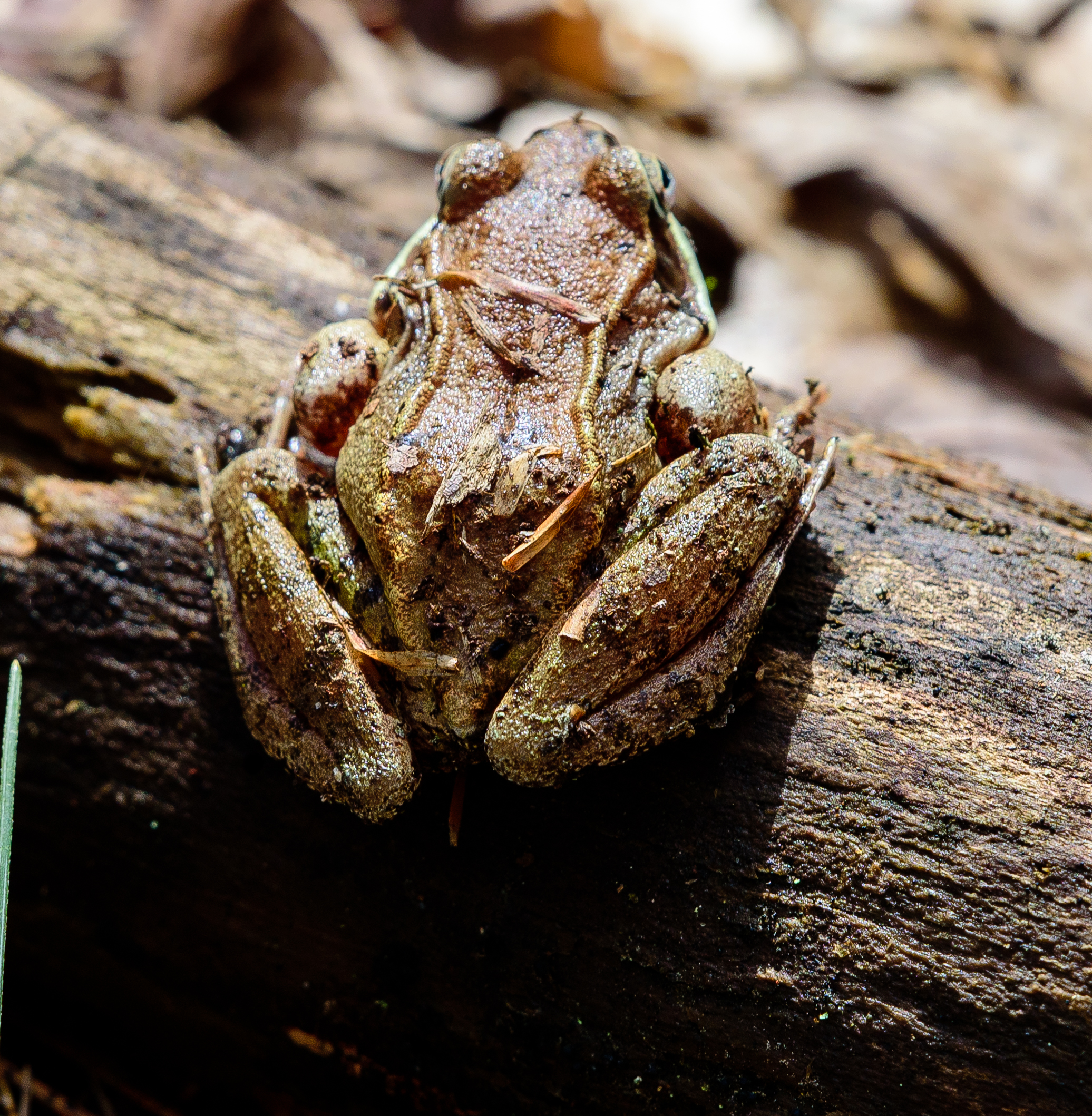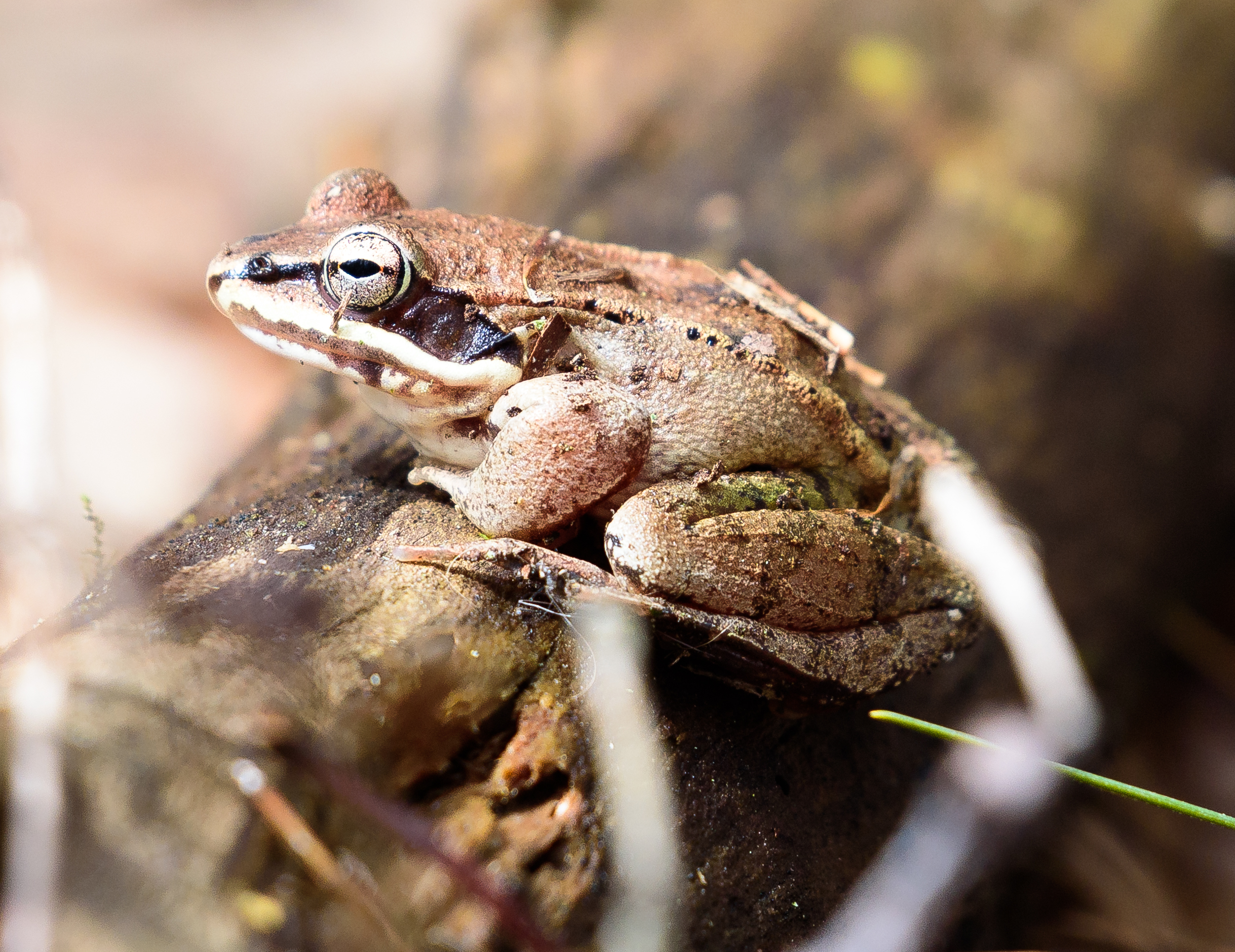As winter ends, low lying areas and woodland hollows fill up with snow melt and rainwater to create temporary isolated woodland ponds called vernal pools. The wildlife sanctuary at the Museum of American Bird Art has 5 vernal pools on the property with our largest vernal pool only a 5 to 10 minute walk from the museum’s parking lot. These pools provide critical breeding habitat for several amphibian and invertebrate species with life cycles that have adapted to these rich, temporary phenomena.

As winter slowly turns into spring, I eagerly anticipate walking up the first hill on the main loop trail. Before the vernal pool is visible, I know spring has arrived when I hear a characteristic “quacking” that isn’t from ducks, but from the wood frog (Rana sylvatica). When they emerge from their winter slumber, they quickly make their way to vernal pools to breed. I heard the first wood frogs in the vernal pool on March 26, 2018 and was able to take the first pictures today.

Characteristic dorsal-lateral ridges on the back of the wood frog.
This masked frog looks somewhat like a much larger spring peeper, but look for the ridges running down the sides and no pattern on the back.

Notice the characteristic eye mask right next to the eye
True to its name, it lives in forests, breeding in temporary, or vernal, pools. It attracts mates with a quacking call, and the female lays large masses of eggs.
Listen carefully for the characteristic quacking coming from the vernal pool right next to where this wood frog is sitting.
Learn even more about vernal pools in the Spring 2018 issue of Explore.



That was AWESOME!!!! Spring is wonderful and so fleeting…but you help us catch the small precious moments. And your photographs are REMARKABLE! Thank you, Sean! Happy Spring!
Hi Faith,
Thank you so much for the wonderful comment, I’ll glad you enjoy the blog post. I’m keeping my eye out for the first Eastern Phoebe and I’ll make sure to let you know when I see them. I think the tree swallows will be back here by Monday too.
Best,
Sean